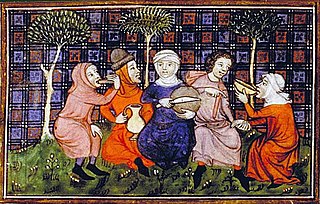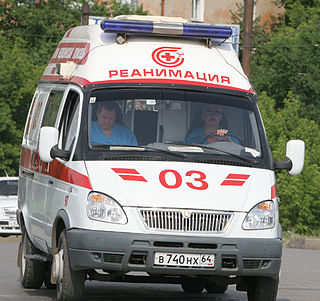Related Research Articles

Finnish cuisine is notable for generally combining traditional country fare and haute cuisine with contemporary continental style cooking. Fish and meat play a prominent role in traditional Finnish dishes in some parts of the country, while the dishes elsewhere have traditionally included various vegetables and mushrooms. Evacuees from Karelia contributed to foods in other parts of Finland in the aftermath of the Continuation War.

Rationing is the controlled distribution of scarce resources, goods, services, or an artificial restriction of demand. Rationing controls the size of the ration, which is one's allowed portion of the resources being distributed on a particular day or at a particular time. There are many forms of rationing, and in Western civilization people experience some of them in daily life without realizing it.

Punjabi cuisine is a culinary style originating in the Punjab, a region in the northern part of the Indian subcontinent, which is now divided in an Indian part and a Pakistani part. This cuisine has a rich tradition of many distinct and local ways of cooking. One is a special form of tandoori cooking that is now famous in other parts of India, UK, Canada, Hong Kong and in many parts of the world.

Russian cuisine is a collection of the different cooking traditions of the Russian people.
Agriculture in the Soviet Union was mostly collectivized, with some limited cultivation of private plots. It is often viewed as one of the more inefficient sectors of the economy of the Soviet Union. A number of food taxes were introduced in the early Soviet period despite the Decree on Land that immediately followed the October Revolution. The forced collectivization and class war against "kulaks" under Stalinism greatly disrupted farm output in the 1920s and 1930s, contributing to the Soviet famine of 1932–33. A system of state and collective farms, known as sovkhozes and kolkhozes, respectively, placed the rural population in a system intended to be unprecedentedly productive and fair but which turned out to be chronically inefficient and lacking in fairness. Under the administrations of Nikita Khrushchev, Leonid Brezhnev, and Mikhail Gorbachev, many reforms were enacted as attempts to defray the inefficiencies of the Stalinist agricultural system. However, Marxist–Leninist ideology did not allow for any substantial amount of market mechanism to coexist alongside central planning, so the private plot fraction of Soviet agriculture, which was its most productive, remained confined to a limited role. Throughout its later decades the Soviet Union never stopped using substantial portions of the precious metals mined each year in Siberia to pay for grain imports, which has been taken by various authors as an economic indicator showing that the country's agriculture was never as successful as it ought to have been. The real numbers, however, were treated as state secrets at the time, so accurate analysis of the sector's performance was limited outside the USSR and nearly impossible to assemble within its borders. However, Soviet citizens as consumers were familiar with the fact that foods, especially meats, were often noticeably scarce, to the point that not lack of money so much as lack of things to buy with it was the limiting factor in their standard of living.

Rationing was introduced temporarily by the British government several times during the 20th century, during and immediately after a war.

A field ration is a canned or pre-packaged meal, easily prepared and consumed by military troops. They are distinguished from regular military garrison rations by virtue of being designed for minimal preparation in the field, using canned, vacuum-sealed, pre-cooked or freeze-dried foods, powdered beverage mixes and concentrated food bars, as well as for long shelf life. Most field rations typically contains meat as one of its main course. The iron ration is a soldier's dry emergency rations.
Rationing in the Soviet Union was introduced several times, during periods of economical hardships.

Soviet cuisine, the common cuisine of the Soviet Union, was formed by the integration of the various national cuisines of the Soviet Union, in the course of the formation of the Soviet people. It is characterized by a limited number of ingredients and simplified cooking. This type of cuisine was prevalent in canteens everywhere in the Soviet Union. It became an integral part of household cuisine and was used in parallel with national dishes, particularly in large cities. Generally, Soviet cuisine was shaped by Soviet eating habits and a very limited availability of ingredients in most parts of the USSR. Most dishes were simplifications of French, Russian, and Austro-Hungarian cuisines. Caucasian cuisines, particularly Georgian cuisine, contributed as well. Canteens run by the government were called stolovaya.

Uzbek cuisine shares the culinary traditions of Turkic peoples across Central Asia. There is a great deal of grain farming in Uzbekistan, so breads and noodles are of importance, and Uzbek cuisine has been characterized as "noodle-rich". Mutton is a popular variety of meat due to the abundance of sheep in the country and it is a part of various Uzbek dishes.

Medieval cuisine includes foods, eating habits, and cooking methods of various European cultures during the Middle Ages, which lasted from the fifth to the fifteenth century. During this period, diets and cooking changed less than they did in the early modern period that followed, when those changes helped lay the foundations for modern European cuisine. Cereals remained the most important staple during the early Middle Ages as rice was introduced late, and the potato was only introduced in 1536, with a much later date for widespread consumption. Barley, oats and rye were eaten by the poor. Wheat was for the governing classes. These were consumed as bread, porridge, gruel and pasta by all of society's members. Fava beans and vegetables were important supplements to the cereal-based diet of the lower orders.

Agriculture in Mongolia constitutes over 10% of Mongolia's annual Gross domestic product and employs one-third of the labor force. However, the high altitude, extreme fluctuation in temperature, long winters, and low precipitation provides limited potential for agricultural development. The growing season is only 95 – 110 days. Because of Mongolia's harsh climate, it is unsuited to most cultivation. Only 1% of the arable land in Mongolia is cultivated with crops, amounting to 1,322,000 hectares in 1998. The agriculture sector therefore remains heavily focused on nomadic animal husbandry with 75% of the land allocated to pasture, and cropping only employing 3% of the population. Crops produced in Mongolia include corn, wheat, barley, and potatoes. Animals raised commercially in Mongolia include sheep, goats, cattle, horses, camels, and pigs. They are raised primarily for their meat, although goats are valued for their hair which can be used to produce cashmere.

The Kuzbass Autonomous Industrial Colony was an experiment in workers' control in the Soviet Union from 1922 to 1926 during the New Economic Policy. It was based in Shcheglovsk, Kuzbass, Siberia.
Azerbaijani cuisine refers to the cooking styles and dishes of the Republic of Azerbaijan. The cuisine developed significantly due to its diversity of agriculture, from abundant grasslands which historically allowed for a culture of pastoralism to develop, as well as to the unique geographical location of Azerbaijan, which is situated on the crossroads of Europe and Asia with an access to the Caspian sea. The location has enabled the people to develop a varied diet rich in produce, milk products, and meat, including beef, mutton, fish and game. Furthermore, the location, which was contended over by many historical kingdoms, khanates, and empires also meant that Azerbaijani cuisine was influenced by the culinary traditions of multiple different cultures, such as Turkic, Iranian, and Eastern European. As a result, Azerbaijani cuisine makes use of many different culinary techniques and ingredients.

The Western pattern diet (WPD) is a modern dietary pattern that is generally characterized by high intakes of red meat, processed meat, pre-packaged foods, butter, candy and sweets, fried foods, conventionally-raised animal products, high-fat dairy products, eggs, refined grains, potatoes, corn and high-sugar drinks, and low intakes of fruits, vegetables, whole grains, grass-fed animal products, fish, nuts, and seeds. The modern standard American diet was brought about by fundamental lifestyle changes following the Neolithic Revolution, and, later, the Industrial Revolution.

Healthcare in Russia is provided by the state through the Federal Compulsory Medical Insurance Fund, and regulated through the Ministry of Health. The Constitution of the Russian Federation has provided all citizens the right to free healthcare since 1996. In 2008, 621,000 doctors and 1.3 million nurses were employed in Russian healthcare. The number of doctors per 10,000 people was 43.8, but only 12.1 in rural areas. The number of general practitioners as a share of the total number of doctors was 1.26 percent. There are about 9.3 beds per thousand population—nearly double the OECD average.

Collectivization in Ukraine, officially the Ukrainian Soviet Socialist Republic, was part of the policy of Collectivization in the USSR and dekulakization that was pursued between 1928 and 1933 with the purpose to consolidate individual land and labour into collective farms called kolkhoz and to eliminate enemies of the working class. The idea of collective farms was seen by peasants as a revival of serfdom.
The causes of the Holodomor, the famine that ravaged Soviet Ukraine during 1932–1933, killing between 2.2 million and 10 million individuals, are the subject of scholarly and political debate. Some historians believe the famine was the unintended consequence of problems arrising from agricultural collectivisation implemented to support the program of rapid industrialisation in the Soviet Union under Joseph Stalin. Other historians believe policies were intentionally designed to cause the famine. Some suggest that the famine may fall under the legal definition of genocide.

Rationing is the controlled distribution of scarce resources, goods, or services, or an artificial restriction of demand. Rationing controls the size of the ration, which is one person's allotted portion of the resources being distributed on a particular day or at a particular time.

A Pozharsky cutlet is a breaded ground chicken or veal patty that is typical for Russian cuisine. A distinct feature of this cutlet is adding butter to minced meat which results in an especially juicy and tender consistency. The dish was created in the beginning of the 19th century in Russia and later adopted by French haute cuisine.
References
- ↑ National Archive of Republic of Karelia, collection 3, inventory 2, file 791, sheet 104.
- ↑ Elena Osokina, Za fasadom "stalinskogo izobiliia". Raspredeleniie i rynok v snabzhenii naseleniia v gody industrializatsii (Moscow, 1998), 251